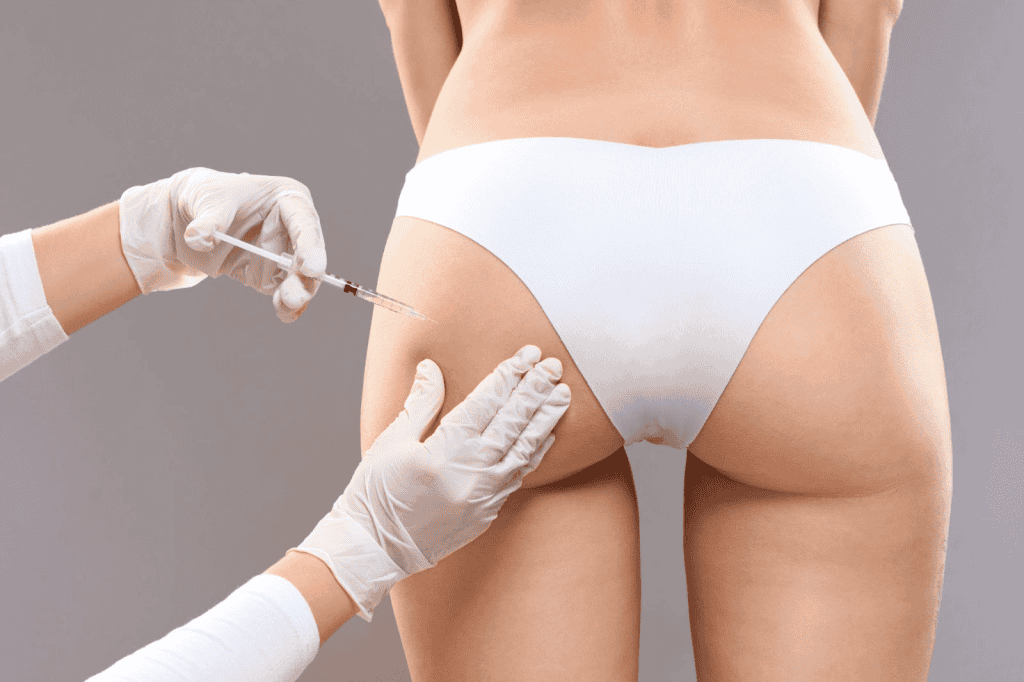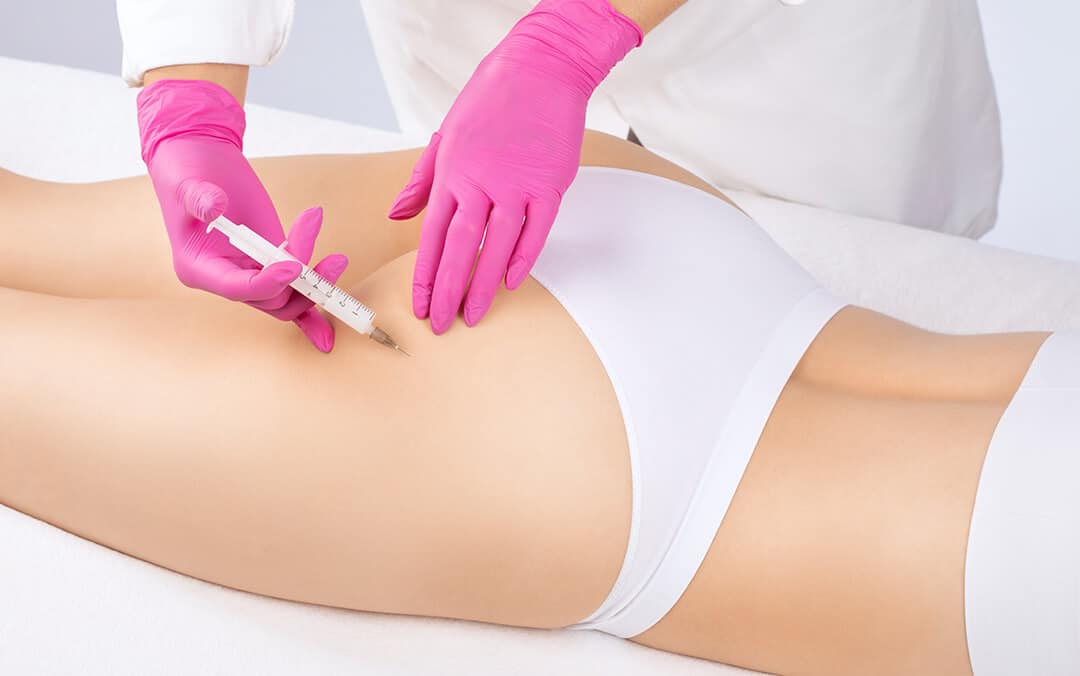Are Buttock Silicone Injections Safer Than Fat Transfer?
Key Takeaways
- Understand the Risks: Silicone injections in the buttocks, a form of cosmetic surgery, can lead to severe health complications, including infections and tissue damage.
- Know the Differences: Unlike Brazilian Butt Lift (BBL) surgery, silicone injections, dermal filler, and sculptra are not FDA-approved and carry higher risks.
- Consider Safer Alternatives: Explore safer options like fat transfer procedures, which use your body’s own fat for augmentation in plastic surgery, butt implants, and butt lifts.
- Be Informed About Options: Injectable options like hyaluronic acid fillers, sculptra, and silicone injection may offer temporary results with fewer risks.
- Consult Professionals: Always seek advice from board-certified plastic surgeons to understand the best and safest procedures for your surgery, including butt implants, silicone injection, or buttock augmentation injections.
- Prioritize Your Health: Opt for procedures that prioritize your long-term health and well-being over short-term aesthetic gains, including plastic surgery and butt implants.
Understanding Silicone Injections
Non-Surgical Method
Silicone injections are a non-surgical method to enhance the size and shape of buttocks in plastic surgery. People choose this method for various reasons, such as avoiding surgery and opting for augmentation injections or silicone injection. It involves injecting silicone directly into the buttocks.
Injection Process
The process uses syringes or cannulas to inject silicone. Doctors first mark the areas needing augmentation. They then use sterilized equipment to inject the silicone. The procedure in the department usually takes about 30 minutes to an hour for plastic surgery or a silicone injection.
Medical-Grade vs. Non-Medical Grade
There is a significant difference between medical-grade and non-medical grade silicone used in plastic surgery and butt implants. Medical-grade silicone is safe and approved for use in the body, including plastic surgery and butt implants, as per the department guidelines. Non-medical grade silicone can be harmful and cause severe complications in surgery and butt implants.
Risks of Non-Medical Grade Silicone
Using non-medical grade silicone poses serious risks. These include infections, allergic reactions, and even tissue death. Some people have experienced severe pain and long-term health issues after a silicone injection in the butt, according to the department.
Effects on the Buttocks
Cosmetic Enhancement
Buttock silicone injections aim to enhance the buttocks’ appearance. These injections can increase size and improve contour. Many people seek these procedures for a more rounded and lifted butt look, often involving silicone injection.
The results vary based on injection volume and site. Larger volumes can create more dramatic changes. However, precise placement of silicone injection in the butt is crucial for achieving a natural look.
Visual Improvements
Silicone injections often provide immediate visual improvements. Right after the procedure, the buttocks may appear fuller and more defined. This quick change appeals to many seeking fast results.
However, long-term aesthetic risks exist. Over time, injected silicone can shift or cause unevenness. Patients might see lumps or irregular shapes develop.
Pain and Discomfort
Pain is a common side effect of buttock injections. Post-procedure discomfort varies among individuals. Some experience mild soreness, while others report significant pain.
Swelling and bruising are also typical reactions. These effects usually subside within a few weeks but can be uncomfortable initially.
Scar Tissue Formation
Scar tissue may form around the injected silicone. This tissue can harden over time, leading to complications like firmness or tightness in the buttocks.
In severe cases, scar tissue causes chronic pain or restricts movement. Regular follow-ups with a healthcare provider help monitor these developments.
Infection Risks
Buttock augmentation injections carry infection risks. Infections occur if bacteria enter during the procedure or through improper aftercare.
Signs of infection include redness, warmth, and increased pain at the injection site. Immediate medical attention is necessary to address these issues promptly.
Long-Term Maintenance
Maintaining results from buttock injections requires ongoing care. Regular check-ups ensure that any complications are addressed early.
Patients might need additional treatments over time to maintain their desired look. Long-term maintenance involves balancing aesthetics with health considerations.
Silicone vs BBL Surgery
Procedural Differences
Silicone injections and Brazilian Butt Lifts (BBL) differ significantly. Silicone injections use synthetic material. Plastic surgeons inject silicone directly into the buttocks. This method is often quicker but has higher risks.
BBL, on the other hand, uses the patient’s own fat. Surgeons remove fat from other body parts through liposuction. They then purify this fat before injecting it into the buttocks. This process takes longer but offers more natural results.
Safety Profile
BBL is generally safer than silicone injections. Using the patient’s own fat reduces the risk of complications. There are fewer chances of allergic reactions or infections with BBL.
Silicone injections pose several risks. The FDA has not approved silicone for cosmetic injections in the buttocks. Complications can include:
- Infections
- Migration of silicone to other body parts
- Granulomas or lumps forming in the tissue
These risks make silicone injections less favorable compared to BBL.
FDA Stance
The FDA’s stance is clear about silicone injections. They have not approved the use of silicone for buttock augmentation. The primary concern is safety due to potential severe complications.
Plastic surgeons often advise against using silicone for this purpose. Instead, they recommend BBL or other approved methods like breast augmentation techniques adapted for buttock enhancement.
Risks and Complications
Health Risks
Many patients may face serious health risks with buttock silicone injections. Infections are common, causing redness, swelling, and pain. Scarring can also occur, leading to permanent marks on the skin. Chronic pain is another potential complication that can last for years.
Silicone injections can lead to lumps forming under the skin. These lumps can be painful and unsightly. Disfigurement is a possibility if the procedure goes wrong.
Silicone Migration
Silicone migration is a significant danger of these injections. The injected silicone can move from the buttocks to other parts of the body. This migration can affect internal organs like the lungs or heart.
When silicone reaches vital organs, it can cause severe health problems. Breathing difficulties and heart issues are potential outcomes. Migration of silicone poses long-term health risks that are hard to treat.
Unlicensed Practitioners
The risk of complications increases when unlicensed practitioners perform the procedure. Unlicensed individuals may lack proper training and equipment. They might use non-medical grade silicone, which is unsafe.
Patients treated by unlicensed practitioners face greater dangers:
- Higher infection rates
- Increased chance of scarring
- Greater risk of disfigurement
These practitioners may not follow sterile techniques, leading to more infections and other health issues.
Side Effects
Side effects from buttock silicone injections vary widely. Some patients experience minor symptoms like itching or mild discomfort. Others suffer from severe reactions such as intense pain or allergic responses.
In some cases, side effects appear immediately after the injection. For others, symptoms develop over time, becoming chronic conditions that require medical attention.
Long-Term Issues
Long-term complications are a real concern with this cosmetic procedure:
- Persistent pain in the injection area.
- Ongoing infections needing repeated treatments.
- Permanent scarring affecting appearance and self-esteem.
- Internal organ damage due to silicone migration.
These long-term issues often need complex surgical procedures to correct them.
Safer Alternatives
FDA-Approved Fillers
FDA-approved dermal fillers offer a safer alternative to silicone injections. These fillers are regulated and tested for safety. They provide volume and shape to the buttocks without the risks associated with unlicensed providers.
The most common FDA-approved fillers include Sculptra and Radiesse. Both are used in aesthetic medicine for body contouring. These treatments involve injecting substances that stimulate collagen production. This results in a fuller, more natural appearance over time.

Licensed Providers
Consulting with licensed professionals is crucial for any cosmetic procedure. Licensed providers have the necessary training and credentials. They follow strict guidelines to ensure patient safety.
Unlicensed providers often operate without proper oversight. This can lead to severe complications, as discussed in the previous section. Always verify the credentials of your provider before undergoing any treatment.
Non-Invasive Methods
Non-invasive methods like exercise and diet can also enhance buttock appearance naturally. Regular strength training exercises target the gluteal muscles, improving their size and shape.
e effective exercises include:
- Squats
- Lunges
- Deadlifts
- Glute bridges
A balanced diet rich in protein supports muscle growth. Foods like chicken, fish, beans, and nuts are excellent choices.
Fat Transfer Benefits
Dual Benefits
Fat transfer in BBL surgery offers dual benefits. It involves body contouring and reduced rejection risk. Liposuction removes excess fat from areas like the abdomen or thighs. This fat is then purified and injected into the buttocks.
Body contouring enhances overall shape. By removing unwanted fat, patients achieve a slimmer appearance in donor sites. This creates a more balanced look.
Natural-Looking Results
Using the body’s own tissue leads to natural-looking results. Fat grafting uses the patient’s own fat cells. These cells integrate well with existing tissues.
Natural tissue adapts better to changes over time. The results feel more lifelike compared to silicone injections. Patients often find their new curves blend seamlessly with their bodies.
Lower Risk of Complications
Fat transfer has a lower risk of complications than silicone injections. Silicone can cause allergic reactions or infections. Fat grafting reduces these risks because it uses natural tissue.
The body’s immune system accepts its own fat cells more easily. This lowers the chance of rejection or adverse reactions.
Reduced Rejection Risk
Fat transfer has a lower rejection risk compared to synthetic materials. Using excess fat from one’s own body minimizes this risk significantly.
Rejection can lead to serious health issues and further surgeries. By using natural tissues, patients avoid these potential problems.
Long-Term Safety
Fat grafting is considered safer long-term than silicone injections. Silicone may migrate or cause hard lumps over time.
Excess fat used in grafting remains stable within the body. This stability ensures lasting results without unexpected changes.
Injectable Options
Dermal Fillers
Dermal fillers are a popular choice for buttock augmentation. These fillers are approved by health authorities for cosmetic use. Commonly used dermal fillers include hyaluronic acid and poly-L-lactic acid. Both substances are safe and effective when administered properly.
Hyaluronic acid is naturally found in the body. It helps to add volume and smooth out the skin. Poly-L-lactic acid stimulates collagen production, which provides long-term results.
Hydrogel
Hydrogel injections are another option for enhancing the buttocks. Hydrogels consist of water-based gels that can add volume to the buttocks. They are less common than other injectables but still used in some cases.
It is important to choose hydrogels that are specifically designed for medical use. Non-medical grade hydrogels can cause severe complications.
Tissue Filler
Tissue filler injections involve substances that help to build up tissue in the buttocks. These fillers can create a fuller appearance over time. Approved tissue fillers are safe when administered by professionals.
Choosing tissue fillers designed for buttock augmentation is crucial. Using inappropriate fillers can lead to health risks and poor outcomes.
Safety Concerns
The importance of safety cannot be overstated with injectable options. Non-medical grade substances pose significant dangers, including infections, allergic reactions, and even death. Always ensure that injectables come from reputable sources.
Professional administration is also critical. Certified plastic surgeons or dermatologists should perform these procedures. This ensures proper technique and reduces the risk of complications.
Professional Administration
Choosing a qualified professional is essential for any injectable procedure. Look for board-certified plastic surgeons or dermatologists with experience in buttock augmentation.
Professionals will:
- Use approved substances
- Follow strict hygiene protocols
- Monitor patients for adverse reactions
This approach minimizes risks and enhances results.
The Bottom Line
High Risks
Non-medical grade silicone injections for buttock enhancement carry high risks. These materials can cause severe health issues. Cases of infections, allergic reactions, and skin necrosis have been reported. Migration of the silicone to other body parts can also occur. This can lead to chronic pain and deformities.
In some serious cases, death has resulted from these illegal procedures. The U.S. Food and Drug Administration (FDA) has issued warnings against using non-approved substances for cosmetic purposes.
FDA-Approved Treatments
It’s essential to seek FDA-approved treatments for any cosmetic procedure. Approved treatments ensure safety and effectiveness. Licensed medical professionals use regulated materials that have been tested for human use.
Consulting with a qualified practitioner is crucial. They can provide information about the safest options available.
Weighing Benefits vs Risks
Consider the cosmetic benefits against the potential health risks before deciding on buttock injections. While achieving desired results might be tempting, non-medical grade injections pose significant dangers.
Safer alternatives exist, such as fat grafting or FDA-approved fillers. These methods are performed by trained practitioners in controlled environments.
Real-Life Experiences
Many people have shared their experiences with unsafe silicone injections online. Some recount painful recoveries and long-term complications. Others regret their decisions due to irreversible damage.
Final Remarks
You’ve learned a lot about buttock silicone injections. The risks and complications are real, making safer alternatives worth considering. Fat transfer benefits and other injectable options provide viable, safer solutions.
Your health is paramount. Always consult a qualified professional before making decisions. If you found this information useful, share it with others who might benefit from it. Stay informed and prioritize safety in your choices.
Frequently Asked Questions
What are silicone injections?
Silicone injections involve injecting liquid silicone into the body to enhance or reshape specific areas, such as the buttocks.
How do silicone injections affect the buttocks?
Silicone injections can increase buttock size and change its shape. However, they may cause complications like infections and uneven results.
How do silicone injections compare to BBL surgery?
BBL (Brazilian Butt Lift) uses your own fat for augmentation, which is safer than silicone. Silicone carries higher risks of complications and adverse effects.
What are the risks of silicone buttock injections?
Risks include infection, migration of silicone, granulomas, and even life-threatening conditions like embolism. Always consult a qualified professional.
Are there safer alternatives to silicone injections?
Yes, fat transfer procedures like BBL or using FDA-approved fillers are safer alternatives. Consult with a board-certified surgeon for options.
What are the benefits of fat transfer over silicone injections?
Fat transfer uses your own tissue, reducing the risk of rejection and complications. It also provides more natural-looking results compared to synthetic materials.
Can injectable options be safe for buttock enhancement?
FDA-approved fillers can be safe when administered by experienced professionals. Always ensure you choose certified practitioners for any procedure.





